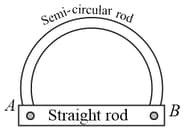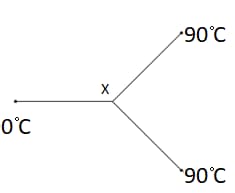Heat Conduction in One Dimension
Heat Conduction in One Dimension: Overview
This topic covers concepts such as Heat Transfer, Diathermanous Medium, Athermanous Medium, Thermal Conduction, Description of Heat Flow at Microscopic Level, The Steady State Heat Flow, Heat Flow and Area of Cross Section, etc.
Important Questions on Heat Conduction in One Dimension
How is the microscopic level of energy related to the macroscopic level of energy?
How is heat transferred on the particle level?
What is the description of heat flow?
Which one is having the lowest thermal conductivity?
What is the Searle's apparatus?
What is Searle's method for thermal conductivity?
What is heat on a microscopic level?
SI unit of temperature gradient is
Which one of the following is not the example of the athermanous medium.
Which one of the following is not the example of the diathermanous medium.
In the given diagram, the possible direction of heat energy transformation is
If the transmission of heat takes through molecular collisions, it is called
Solids are heated by the mode of
In the following configuration, one semi-circular rod is connected to a straight rod of the same material and of the same cross-section. If the connection points and are maintained at different temperatures, then calculate the ratio of the heat transferred through a cross-section of a semi-circular rod to the heat transferred through a cross-section of the straight rod in a given time.

The temperature at the junction of copper and steel is . Given that coefficient of thermal conductivity of copper is times that of steel. Use the parameter from figure of composite cylinder. The value of temperature is

Two identical square rods of metal are welded as shown in figure end to end. In , of heat flows through it. If the rods are welded as shown in figure time taken in of heat flow is



As shown in the above figure, two equally thick metallic plates are put together face to face and a common plate is constructed. If the thermal conductivities are and , then find the equivalent thermal conductivity of this plate.
A cylinder is filled with gas at . The temperature of the gas is now increased by . If the volume of the cylinder is , then find the amount of heat added:
Assume that the thermal conductivity of copper is twice that of aluminium and four times that of brass. Three metal rods made of copper, aluminium and brass are each long and in diameter. These rods are placed end to end, with aluminium between the other two. The free ends of the copper and brass rods are maintained at and respectively. The system is allowed to reach the steady state condition. Assume there is no loss of heat anywhere.
Under steady state condition, the equilibrium temperature of the aluminium-brass junction will be
Three metal rods of the same material and identical in all respects are joined as shown in the figure. The temperatures at the ends are maintained as indicated. Assuming no loss of heat from the curved surfaces of the rods, the temperature at the junction would be


